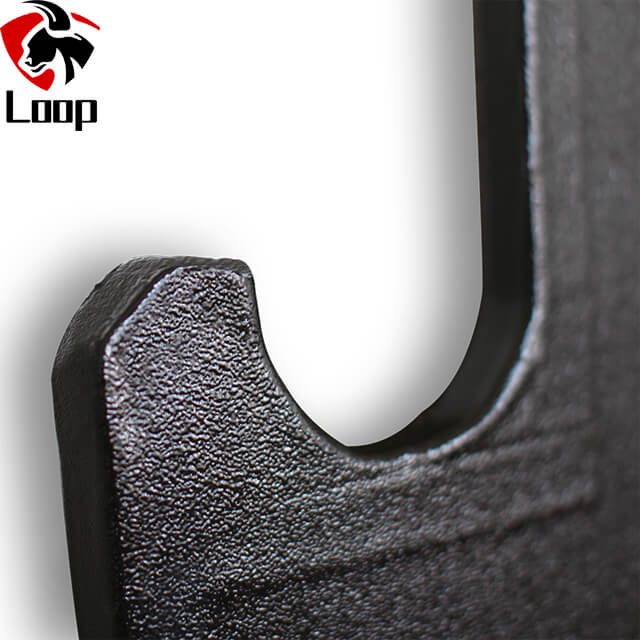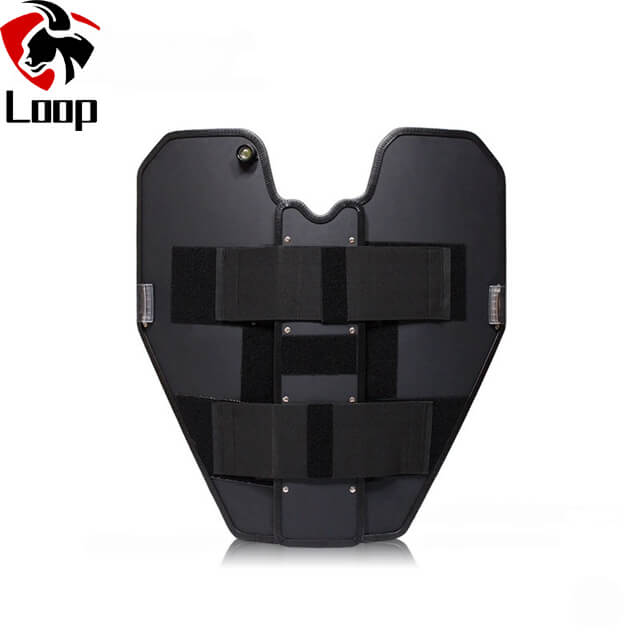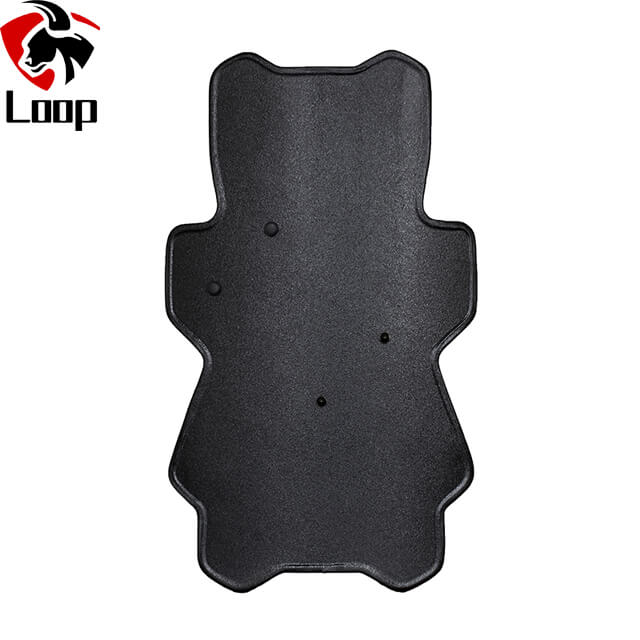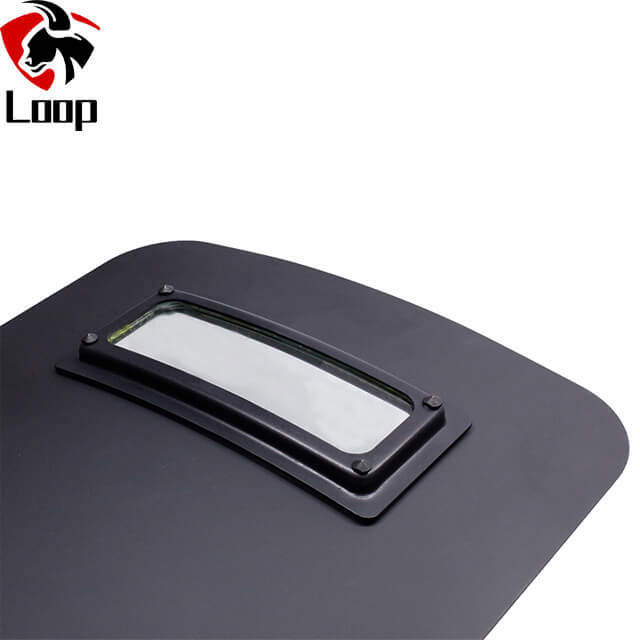Views: 0 Author: Site Editor Publish Time: 2025-10-14 Origin: Site
In modern law enforcement, counter-terrorism, special operations and security actions, ballistic shields are common individual and team protective equipment. In addition to traditional rectangular and round shields, various shaped/contoured ballistic shields have become increasingly popular. They are not "stylish oddities" but are optimized designs driven by tactical needs, ergonomics and mission scenarios. This article provides a systematic introduction—from definition, tactical significance, primary uses, types and materials, advantages and limitations, typical application scenarios, selection and maintenance suggestions, to FAQs—to help customers understand why shaped shields exist, when they are necessary, and how to choose the most suitable model.
A shaped ballistic shield refers to a shield whose outline or contour differs from traditional rectangular/round forms, often featuring specific cutouts, curves, grooves, side wings, viewport placements or handle layouts on the face or edges. The design emphasizes adapting to body posture, sightlines, weapon handling and cover efficiency, meeting the needs of particular tactical movements or mission types.
Common design elements include: side wings (for more lateral coverage), bottom cutouts (to fit knees/lower limbs), angled/curved faces (to reduce reflection and assist shooters’ sightlines), multi-viewport configurations, and modular interfaces for handles, shoulder rests, and quick-release mounts.

Ergonomics & Movement Adaptation
Human movement involves complex postures when moving, crouching, crawling or peeking from cover. Shaped shields with bottom cutouts, curved edges or side wings allow users to maintain maximal protection and comfort across postures.
Optimizing Sightlines, Shooting & Observation Channels
Traditional rectangular shields can create blind spots at different heights or angles. Shaped shields adjust viewport height/position or create lateral spaces for weapon handling, enabling shooters to obtain broader observation and aiming angles while remaining protected.
Multi-functional Tactical Needs
Modern shields are used for arrest, breaching and rescue. Shaped designs allow integration of grips, multi-point mounts, structures to resist flash/smoke effects, and collaboration with communication/monitoring equipment to boost overall tactical capability.
Reducing Target Profile & Reflection Risks
Rounded corners and curved faces reduce light reflection and lower detection probability. In close combat, non-flat surfaces can deflect projectiles or spread impact energy, increasing survivability (depending on material and angle).
Modularity & Mission Customization
Shaped shields are more suitable for modular expansion: side wings can be quickly attached/detached, viewports can be swapped with ballistic glass or night-vision interfaces, and rear mounts can accept cameras or lighting—meeting law enforcement and special forces' plug-and-play needs.

Urban breaching & close-quarters coverage: In narrow streets, doorways or building entries, side wings and bottom cutouts protect lateral and lower exposed areas, allowing officers to approach and peek through door gaps or press the shield against door frames to form temporary cover.
Tactical mobility in confined spaces: Angled and curved designs reduce snagging and jamming in stairwells and corridors, improving formation flow and reaction speed.
Escort & rescue: During escort or casualty evacuation, shaped shields can protect escorted personnel from the side, or the bottom opening can facilitate carrying a casualty while maintaining protection.
Observation & reconnaissance: Custom viewports and lateral openings are ideal for mounting optics, night vision or cameras, enabling reconnaissance while under cover.
Psychological deterrence & crowd control: More imposing and functionally capable shaped shields assist in deterrence, crowd control and reducing escalation risks in law enforcement scenarios.
Winged Shield (side-wing reinforced):
Features: Side extensions that enhance lateral protection.
Suitable for: Street fighting, doorway entries, escort tasks.

Cut-out Bottom (lower-edge opening):
Features: Bottom arc or straight cutout to fit knees or enable low-profile posture.
Suitable for: Window observation, stair movement, low-profile advances.
Angled/Curved Face:
Features: Noticeable curvature or angled surfaces to reduce ricochet and glare.
Suitable for: Open-area close combat and missions requiring reduced optical exposure.
Multi-Viewport Shield:
Features: One or multiple viewports or side observation holes; can fit ballistic glass or night-vision interfaces.
Suitable for: Reconnaissance, night operations and extended observation.
Modular Hybrid Shield:
Features: Detachable wings, shoulder rests, quick-release handles; supports accessories (camera, light, comms).
Suitable for: SWAT, counter-terrorism and multi-role missions.
The protective effect of a shaped shield depends on the face material and backing/interlayer structure. Common materials include:
High-performance polymer composites (UHMWPE, PE layers): Lightweight with good energy absorption; suitable for portable shields.
Ceramic composites (ceramic + backing): High hardness and better resistance to armor-piercing and high-velocity rounds, but heavier.
Steel or metal alloys: Durable but heavy; often used for fixed cover or vehicle-mounted applications.
Multi-layer composites (aramid fiber + resin): Balance between impact resistance and shock reduction; common for medium-threat shields.
Ballistic glass viewports: Typically laminated glass + polycarbonate composite, providing visibility while maintaining protection.
Certification & Standards: When purchasing, refer to applicable ballistic rating standards (such as NIJ levels or local certifications) to ensure the shield can withstand expected threats. A shaped design does not change the inherent protection of the material but can affect local stress distribution and angle response—so design and material need matched testing.

Strong mission adaptability: Shape can be optimized for breaching, escort, reconnaissance, etc.
Improved operational efficiency: Better sightlines and handling support faster targeting and intel gathering.
Ergonomic benefits: Reduced fatigue during prolonged use and lower muscular strain.
High expandability: Easy to integrate electronic reconnaissance or lighting devices for modern operations.
Increased survivability: In certain postures/angles, the shaped face may deflect projectiles or reduce fatal hits (requires material and ballistic analysis).
Manufacturing & cost: Shaped and modular structures increase production complexity and cost.
Volume & portability: Some winged or multi-viewport designs increase bulk, affecting rapid transport or vehicle stowage.
Maintenance complexity: Multiple removable components require more upkeep; viewports and seals need periodic replacement.
Angle dependency: Shaped designs can create local weak points at specific angles; this must be addressed by reinforced design and testing.
Training requirements: New shield types require specialized training to maximize tactical benefit (e.g., using bottom cutouts and side wings for cover and shooting).
Special forces / counter-terror teams: Urban breaching, hostage rescue, building clearance.
SPECIAL POLICE / SWAT: Law enforcement entries, foyer checks, tactical deployments.
CIVIL PROTECTION / PRIVATE SECURITY: VIP escort, route security, keypoint guarding.
CONFINED-SPACE RESPONSE TEAMS: Inspecting suspicious packages, entering narrow industrial spaces.
PRISON / DETENTION SECURITY: Close-range control and transport of high-risk individuals.
Clarify mission scenarios: Urban street fighting, building entry, open-area protection or escort tasks will determine the need for wings, bottom cutouts or viewports.
Determine protection level: Select the appropriate NIJ or local rating according to threat assessment (handgun, rifle, or AP threats).
Balance materials & weight: For extended foot patrols, prioritize high-performance lightweight materials (UHMWPE); for vehicle-based roles, heavier ceramic/steel composites may be acceptable.
Modularity & accessory compatibility: Choose models that support quick-detach wings, shoulder rests, lighting and camera mounts for operational flexibility.
Viewport & observation setup: For extended surveillance or night ops, select solutions with ballistic glass and night-vision/camera interfaces.
Grip & carrying methods: Test handle designs for single-/two-handed use and check for shoulder/strap systems to distribute load.
Maintenance & spare part costs: Ask about supply cycles and pricing for consumables (viewports, seals, handle components).
Training & drill support: Arrange trials and specialized training before procurement so personnel can master tactics specific to the new shield.

Regularly inspect fasteners & interfaces: Check wing hinges, handle bolts and viewport seals for looseness or cracks.
Viewport care: Ballistic glass surfaces are scratch-prone—use specialized cleaners and soft cloths; replace immediately if cracked.
Environmental cleaning: Dirt, salt and chemicals can corrode metal fittings or damage backing materials—clean and dry after use.
Periodic function testing: Perform structural integrity inspections and accessory tests (lights, cameras) under safe conditions.
Storage & transport: Use appropriate covers or hard cases to avoid deformation or viewport damage.
Q1: Are shaped shields safer than regular rectangular shields?
A: Shaped shields can better adapt to posture and sightlines and thus offer tactical efficiency advantages over basic shields. Actual protection depends on material and ballistic rating—the design alone does not determine safety.
Q2: Are shaped shields suitable for all law enforcement teams?
A: Not necessarily. If missions primarily involve open-area protection, standard large rectangular shields may be more suitable; shaped shields excel in urban breaching, confined spaces and multi-role tasks.
Q3: How long do shaped shields last?
A: Lifespan depends on materials, usage frequency and maintenance. High-quality composite shields can last many years with proper care, but viewports and accessories will require periodic replacement.
Q4: Are shaped shields expensive to procure?
A: Compared with simple shields, shaped and modular designs usually cost more. However, if they enhance mission success and personnel safety, they can offer good cost-effectiveness.
Shaped ballistic shields are not born out of "aesthetic novelty"—they are functional equipment optimized for modern tactical demands, ergonomics and mission complexity. In urban operations, building clearance, confined-space entry, escort and reconnaissance tasks, a properly designed and appropriately rated shaped shield can significantly improve personnel survivability and mission efficiency.
If you want to select the right shaped shield for your team, we can provide:
- Model recommendations based on mission type and threat assessment;
- Comparisons of materials and protection levels (including sample testing);
- Modular configuration options (side wings, viewports, shoulder rests, lighting/camera interfaces) and customization with quotes;
- Bulk procurement.
Want a free consultation or sample quote? When contacting us, please leave your use scenario, estimated quantity, desired protection level and requirements for modular features. We will provide professional recommendations and customization options during business days.
Click here to view more Loop circle equipment
If you are looking for high-quality Bulletproof-Shield, ballistic helmet, ballistic plate, ballistic vest, or other tactical accessories, contact us today. We provide professional-grade solutions, competitive pricing, and fast delivery to build a reliable tactical system for your needs.